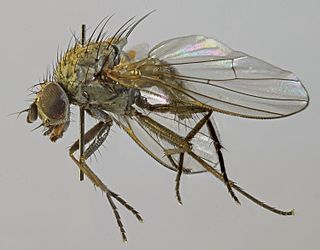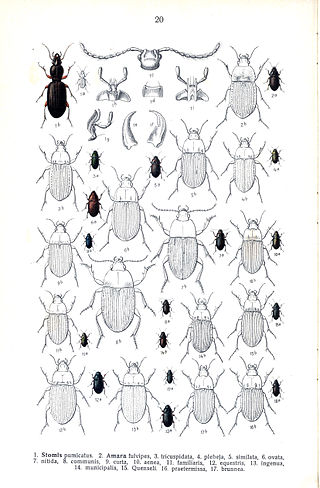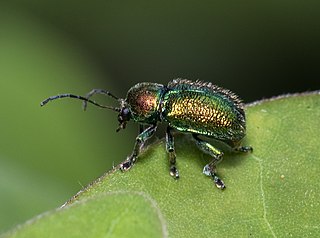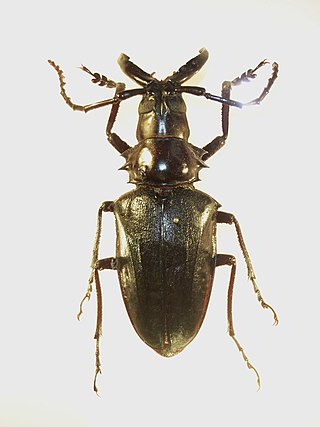
Amara is a large genus of carabid beetles, commonly called the sun beetles. Many are holarctic, but a few species are neotropical or occur in eastern Asia.

The Fauna of British India with long titles including The Fauna of British India, Including Ceylon and Burma, and The Fauna of British India Including the Remainder of the Oriental Region is a series of scientific books that was published by the British government in India and printed by Taylor and Francis of London. The series was started sometime in 1881 after a letter had been sent to the Secretary of State for India signed by Charles Darwin, Sir Joseph Dalton Hooker and other "eminent men of science" forwarded by P.L.Sclater to R.H. Hobart. W. T. Blanford was appointed editor and began work on the volume on mammals.

Alexander Henry Haliday was an Irish entomologist. He is primarily known for his work on Hymenoptera, Diptera, and Thysanoptera, but worked on all insect orders and on many aspects of entomology.

Amara aulica is a species of beetle of the genus Amara in the Harpalinae subfamily. It is native to Europe.

Milesia is a genus of very large hoverflies, which mimic social wasps. For example, the European species Milesia crabroniformis is a convincing mimic of the hornet species Vespa crabro. Milesia are predominantly Palaeotropical in distribution almost entirely Oriental.

Cosmisoma fasciculatum is a species of beetle in the family Cerambycidae. It was described by Guillaume-Antoine Olivier in 1795 and can be found in French Guiana and north central Brasil.

Neoptychodes trilineatus is a species of flat-faced longhorn beetles in the subfamily Lamiinae.

Eburia tetrastalacta is a species of beetle in the family Cerambycidae.

Macrocoma is a genus of leaf beetles in the subfamily Eumolpinae. It contains about 100 species, which are found in tropical Africa, around the Mediterranean, on the Canary Islands, in western and central Asia, and in India.

Azelia cilipes is a species of fly in the family Muscidae. It is found in the Palearctic.

Amara plebeja is a species of ground beetle native to Europe.

Eumolpini is a tribe of leaf beetles in the subfamily Eumolpinae. It is the largest tribe in the subfamily, with approximately 170 genera found worldwide. Members of the tribe almost always have a longitudinal median groove on the pygidium, which possibly helps to keep the elytra locked at rest. They also generally have a subglabrous body, as well as appendiculate pretarsal claws.
Euryope is a genus of leaf beetles in the subfamily Eumolpinae. It is distributed in Africa and the Arabian Peninsula.
Hyperaxis is a genus of leaf beetles in the subfamily Eumolpinae. It is distributed in East and Southeast Asia.

Abirus is a genus of leaf beetles in the subfamily Eumolpinae. It is distributed from the Malay Archipelago to the Indian subcontinent, China, and the Ryukyu Islands. The genus was first established by the Belgian entomologist Félicien Chapuis in 1874, as a split of Dermorhytis.
Cleoporus is a genus of leaf beetles in the subfamily Eumolpinae. It is known from Asia.
Olorus is a genus of leaf beetles in the subfamily Eumolpinae. It is found in Asia.
Heterotrichus is a genus of leaf beetles in the subfamily Eumolpinae. It is distributed in Southeast Asia and Southern China.

Oxynopterus mucronatus, sometimes known as the giant click beetle, is a species of click beetle from tropical Southeast Asia. Their larvae are specialized predators of termites.

Dorysthenes walkeri is a species of longhorn beetles in the subfamily Prioninae. Records of occurrence are from Iran to Indo-China.

















